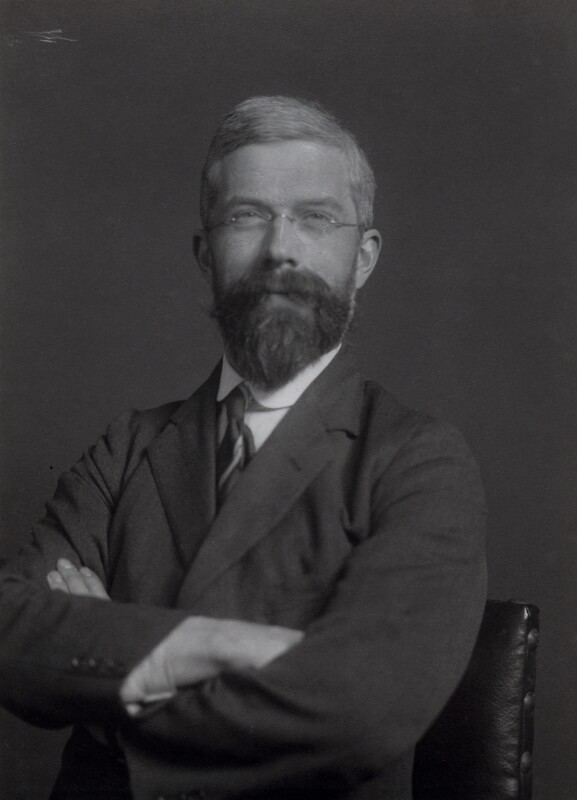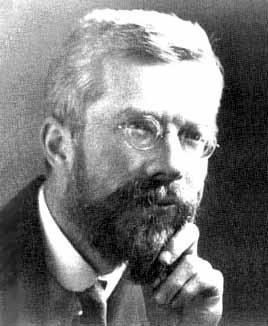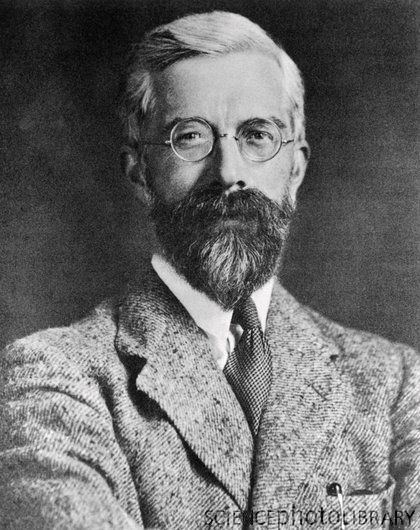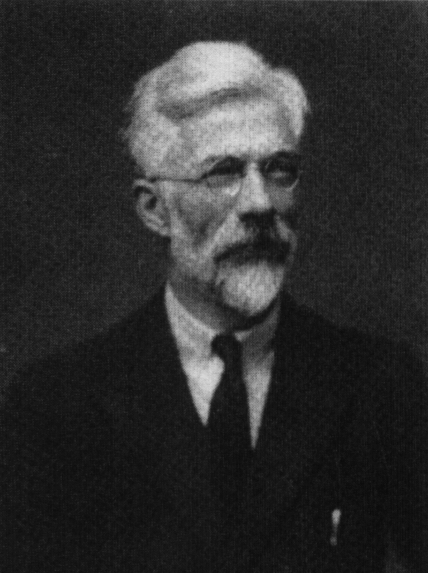Nationality British | Name Ronald Fisher Role Statistician | |
 | ||
Born 17 February 1890East Finchley, London, England ( 1890-02-17 ) Institutions Rothamsted Research, University College London, Cambridge University, University of Adelaide, Commonwealth Scientific and Industrial Research Organisation Academic advisors James Hopwood Jeans and F. J. M. Stratton Parents Katie Heath, George Fisher Books Statistical Methods for Resea, The Genetical Theory of, The Design of Experiments, Statistical Methods - Experime, Statistical Methods and Scie Similar People | ||
Science in seconds ronald fisher
Sir Ronald Aylmer Fisher FRS (17 February 1890 – 29 July 1962), who published as R. A. Fisher, was a British statistician and biologist who used mathematics to combine Mendelian genetics and natural selection. This contributed to the revival of Darwinism in the early 20th century revision of the theory of evolution known as the modern synthesis.
Contents
- Science in seconds ronald fisher
- Life and Works of Ronald Aylmer Fisher Part 14
- Early life and education
- Career
- Rothamsted Experimental Station 1919 1933
- University College London 1933 39
- University of Cambridge 1940 1956
- Adelaide 1957 1962
- Personal life and beliefs
- Eugenics
- Race
- Legacy
- Recognition
- References

From 1919 onward he worked at the Rothamsted Experimental Station for 14 years, where he analysed its immense data from crop experiments since the 1840s, and developed the analysis of variance (ANOVA). He established his reputation there in the following years as a biostatistician. He is known as one of the three principal founders of population genetics. He outlined Fisher's principle, the Fisherian runaway and sexy son hypothesis theories of sexual selection. He also made important contributions to statistics, including the maximum likelihood, fiducial inference, the derivation of various sampling distributions among many others.

Fisher held strong views on race. Throughout his life, he was a prominent supporter of eugenics, an interest which led to his work on statistics and genetics. Notably, he was a dissenting voice in UNESCO's statement The Race Question, insisting on racial differences.

Life and Works of Ronald Aylmer Fisher Part 1/4
Early life and education
Fisher was born in East Finchley in London, England into a middle class household; his father, George, was a successful partner in Robinson & Fisher, auctioneers and fine art dealers. He was one of twins with the other being still-born and grew up the youngest with three sisters and one brother. From 1.96 until 1904 they lived at Inverforth House in London, where English Heritage installed a blue plaque in 2002, before moving to Streatham. His mother, Kate, died from acute peritonitis when he was 14, and his father then lost his business, 18 months later.
Lifelong poor eyesight caused his rejection by the British Army for World War I, but also developed his ability to visualize problems in geometrical terms, not in writing mathematical solutions, or proofs. He entered Harrow School age 14 and won the school's Neeld Medal in mathematics. In 1909, he won a scholarship to study Mathematics at Gonville and Caius College, Cambridge. In 1912, he gained a First in Astronomy. In 1915 he published a paper The evolution of sexual preference on sexual selection and mate choice.
Career
From 1913-1919, Fisher worked for six years as a statistician in the City of London and taught physics and maths at a sequence of public schools, at the Thames Nautical Training College, and at Bradfield College. There he settled with his new bride, Eileen Guinness, with whom he had two sons and six daughters.
In 1918 he published "The Correlation Between Relatives on the Supposition of Mendelian Inheritance", in which he introduced the term variance and proposed its formal analysis. He put forward a genetics conceptual model showing that continuous variation amongst phenotypic traits measured by biostatisticians could be produced by the combined action of many discrete genes and thus be the result of Mendelian inheritance. This was the first step towards establishing population genetics and quantitative genetics, which demonstrated that natural selection could change allele frequencies in a population, resulting in reconciling its discontinuous nature with gradual evolution. Joan Box, Fisher's biographer and daughter says that Fisher had resolved this problem already in 1911.
Rothamsted Experimental Station, 1919-1933
In 1919, he began working at the Rothamsted Experimental Station for 14 years, where he analysed its immense data from crop experiments since the 1840s, and developed the analysis of variance (ANOVA). In 1919, he was offered a position at the Galton Laboratory in University College London led by Karl Pearson, but instead accepted a temporary job at Rothamsted in Harpenden to investigate the possibility of analysing the vast amount of crop data accumulated since 1842 from the "Classical Field Experiments". He analysed the data recorded over many years and in 1921, published Studies in Crop Variation, and his first application of the analysis of variance ANOVA. In 1928, Joseph Oscar Irwin began a three-year stint at Rothamsted and became one of the first people to master Fisher's innovations. Between 1912 and 1922 Fisher recommended, analyzed (with flawed attempts at proofs) and vastly popularized Maximum likelihood.
Fisher's 1924 article On a distribution yielding the error functions of several well known statistics presented Pearson's chi-squared test and William Gosset's Student's t-distribution in the same framework as the Gaussian distribution and is where he developed Fisher's z-distribution a new statistical method, commonly used decades later as the F distribution. He pioneered the principles of the design of experiments and the statistics of small samples and the analysis of real data.
In 1925 he published Statistical Methods for Research Workers, one of the 20th century's most influential books on statistical methods. Fisher's method is a technique for data fusion or "meta-analysis" (analysis of analyses). This book also popularized the p-value, and plays a central role in his approach. Fisher proposes the level p=0.05, or a 1 in 20 chance of being exceeded by chance, as a limit for statistical significance, and applies this to a normal distribution (as a two-tailed test), thus yielding the rule of two standard deviations (on a normal distribution) for statistical significance. The 1.96, the approximate value of the 97.5 percentile point of the normal distribution used in probability and statistics, also originated in this book.
"The value for which P=.05, or 1 in 20, is 1.96 or nearly 2 ; it is convenient to take this point as a limit in judging whether a deviation is to be considered significant or not."
In Table 1 of the work, he gave the more precise value 1.959964.
In 1928, Fisher was the first to use diffusion equations to attempt to calculate the distribution of allele frequencies and the estimation of genetic linkage by maximum likelihood methods among populations.
In 1930, The Genetical Theory of Natural Selection was first published by Clarendon Press and is dedicated to Leonard Darwin. A core work of the neo-Darwinian modern evolutionary synthesis, it helped define population genetics, which Fisher founded alongside Sewall Wright and J. B. S. Haldane, and revived Darwins neglected idea of sexual selection. One of Fischer´s favorite aphorisms was "Natural selection is a mechanism for generating an exceedingly high degree of improbability."
Fisher´s fame grew and he began to travel and lecture widely. In 1931, he spent six weeks at the Statistical Laboratory at Iowa State College where he gave three lectures per week, and met many American statisticians, including George W. Snedecor. He returned there again in 1936.
University College London, 1933-39
In 1933, Fisher became Professor of Eugenics at University College London until 1939 when the department was dissolved. In 1935, he published by The Design of Experiments, which was "also fundamental, [and promoted] statistical technique and application... The mathematical justification of the methods was not stressed and proofs were often barely sketched or omitted altogether .... [This] led H.B. Mann to fill the gaps with a rigorous mathematical treatment". In this book Fisher also outlined the Lady tasting tea, now a famous design of a statistical randomized experiment which uses Fisher's exact test and is the original exposition of Fisher's notion of a null hypothesis.
The same year he also published a paper on fiducial inference and applied it to the Behrens–Fisher problem, the solution to which, proposed first by Walter Behrens and a few years later by Fisher, is the Behrens–Fisher distribution.
In 1936 he introduced the Iris flower data set as an example of discriminant analysis.
In his 1937 paper The wave of advance of advantageous genes he proposed Fisher's equation in the context of population dynamics to describe the spatial spread of an advantageous allele and explored its travelling wave solutions. Out of this also came the Fisher–Kolmogorov equation. In 1937, he visited the Indian Statistical Institute in Calcutta, and its one part-time employee, P. C. Mahalanobis, often returning to encourage its development. He was the guest of honour at its 25th anniversary in 1957, when it had 2000 employees.
In 1938, Fisher and Frank Yates described the Fisher–Yates shuffle in their book Statistical tables for biological, agricultural and medical research. Their description of the algorithm used pencil and paper; a table of random numbers provided the randomness.
University of Cambridge, 1940-1956
In 1943, along with A.S. Corbet and C.B. Williams he published a paper on relative species abundance where he developed the logseries to fit two different abundance data sets In the same year he took the Balfour Chair of Genetics where the Italian researcher Luigi Luca Cavalli-Sforza was recruited in 1948, establishing a one-man unit of bacterial genetics.
In 1947, Fisher used a Pearson's chi-squared test to analyze Mendel's data and concluded that Mendel's results with the predicted ratios were far too perfect, suggesting that adjustments (intentional or unconscious) had been made to the data to make the observations fit the hypothesis. Later authors have claimed Fisher's analysis was flawed, proposing various statistical and botanical explanations for Mendel's numbers. In the same year, Fisher cofounded the journal Heredity with Cyril Darlington and in 1949 he published The Theory of Inbreeding.
In 1950 he published "Gene Frequencies in a Cline Determined by Selection and Diffusion" on the wave of advance of advantageous genes and on clines of gene frequency, being notable as the first application of a computer, the EDSAC, to biology. He developed computational algorithms for analyzing data from his balanced experimental designs, with various editions and translations, becoming a standard reference work for scientists in many disciplines. In ecological genetics he and E. B. Ford showed how the force of natural selection was much stronger than had been assumed, with many ecogenetic situations (such as polymorphism) being maintained by the force of selection.
During this time he also worked on mouse chromosome mapping; breeding the mice in laboratories in his own house.
Fisher publicly spoke out against the 1950 study showing that smoking tobacco causes lung cancer, arguing that correlation does not imply causation. To quote his biographers Yates and Mather, "It has been suggested that the fact that Fisher was employed as consultant by the tobacco firms in this controversy casts doubt on the value of his arguments. This is to misjudge the man. He was not above accepting financial reward for his labours, but the reason for his interest was undoubtedly his dislike and mistrust of puritanical tendencies of all kinds; and perhaps also the personal solace he had always found in tobacco."
He gave the 1953 Croonian lecture on population genetics.
In the winter of 1954–1955 Fisher met Debabrata Basu, the Indian statistician who wrote in 1988, "With his reference set argument, Sir Ronald was trying to find a via media between the two poles of Statistics – Berkeley and Bayes. My efforts to understand this Fisher compromise led me to the likelihood principle".
Adelaide, 1957-1962
In 1957, a retired Fisher emigrated to Australia, where he spent time as a senior research fellow at the Australian Commonwealth Scientific and Industrial Research Organisation (CSIRO) in Adelaide. He died there in 1962, and his remains were interred within St Peter's Cathedral.
Personal life and beliefs
He married Eileen Guinness, with whom he had two sons and six daughters. His marriage disintegrated during World War II, and his oldest son George, an aviator, was killed in combat. His daughter Joan, who wrote a biography of her father, married the noted statistician George E. P. Box.
According to Yates and Mather, "His large family, in particular, reared in conditions of great financial stringency, was a personal expression of his genetic and evolutionary convictions." Fisher was noted for being loyal, and was seen as a patriot, a member of the Church of England, politically conservative, as well as a scientific rationalist. He developed a reputation for carelessness in his dress and was the archetype of the absent-minded professor. H. Allen Orr describes him in the Boston Review as a "deeply devout Anglican who, between founding modern statistics and population genetics, penned articles for church magazines". In a 1955 broadcast on Science and Christianity, he said:
Eugenics
In 1910 Fisher joined the Eugenics Society (UK) at University of Cambridge, whose members included John Maynard Keynes, R. C. Punnett, and Horace Darwin. He saw eugenics as addressing pressing social and scientific issues that encompassed and drove his interest in both genetics and statistics. During World War I Fisher started writing book reviews for the Eugenic Review and volunteered to undertake all such reviews for the journal, being hired for a part-time position. The last third of The Genetical Theory of Natural Selection focussed on eugenics, attributing the fall of civilizations to the fertility of their upper classes being diminished, and used British 1911 census data to show an inverse relationship between fertility and social class, partly due, he claimed, to the lower financial costs and hence increasing social status of families with fewer children. He proposed the abolition of extra allowances to large families, with the allowances proportional to the earnings of the father. He served in several official committees to promote Eugenics. In 1934, he resigned from the Eugenics Society over a dispute about increasing the power of scientists within the movement.
Race
In 1950, Fisher opposed UNESCO's The Race Question, believing that evidence and everyday experience showed that human groups differ profoundly "in their innate capacity for intellectual and emotional development" and concluded that the "practical international problem is that of learning to share the resources of this planet amicably with persons of materially different nature", and that "this problem is being obscured by entirely well-intentioned efforts to minimize the real differences that exist". The revised statement titled "The Race Concept: Results of an Inquiry" (1951) was accompanied by Fisher's dissenting commentary.
Legacy
The 1930 The Genetical Theory of Natural Selection is commonly cited in biology books, and outlines many important concepts, such as:
Beyond the already mentioned theories Fisher is also known for the following:
Recognition
Fisher was elected to the Royal Society in 1929. He was made a Knight Bachelor by Queen Elizabeth II in 1952 and awarded the Linnean Society of London Darwin–Wallace Medal in 1958.
In 1950, Maurice Wilkes and David Wheeler used the Electronic Delay Storage Automatic Calculator to solve a differential equation relating to gene frequencies in a paper by Ronald Fisher. This represents the first use of a computer for a problem in the field of biology. The Kent distribution (also known as the Fisher–Bingham distribution) was named after him and Christopher Bingham in 1982 while Fisher kernel was named after Fisher in 1998.
The R. A. Fisher Lectureship is a North American annual lecture prize, established in 1963. On April 28, 1998 a minor planet, 21451 Fisher, was named after him.
Anders Hald called Fisher "a genius who almost single-handedly created the foundations for modern statistical science", while Richard Dawkins named him "the greatest biologist since Darwin":
Not only was he the most original and constructive of the architects of the neo-Darwinian synthesis, Fisher also was the father of modern statistics and experimental design. He therefore could be said to have provided researchers in biology and medicine with their most important research tools, as well as with the modern version of biology's central theorem.
Geoffrey Miller said of him:
To biologists, he was an architect of the "modern synthesis" that used mathematical models to integrate Mendelian genetics with Darwin's selection theories. To psychologists, Fisher was the inventor of various statistical tests that are still supposed to be used whenever possible in psychology journals. To farmers, Fisher was the founder of experimental agricultural research, saving millions from starvation through rational crop breeding programs.
